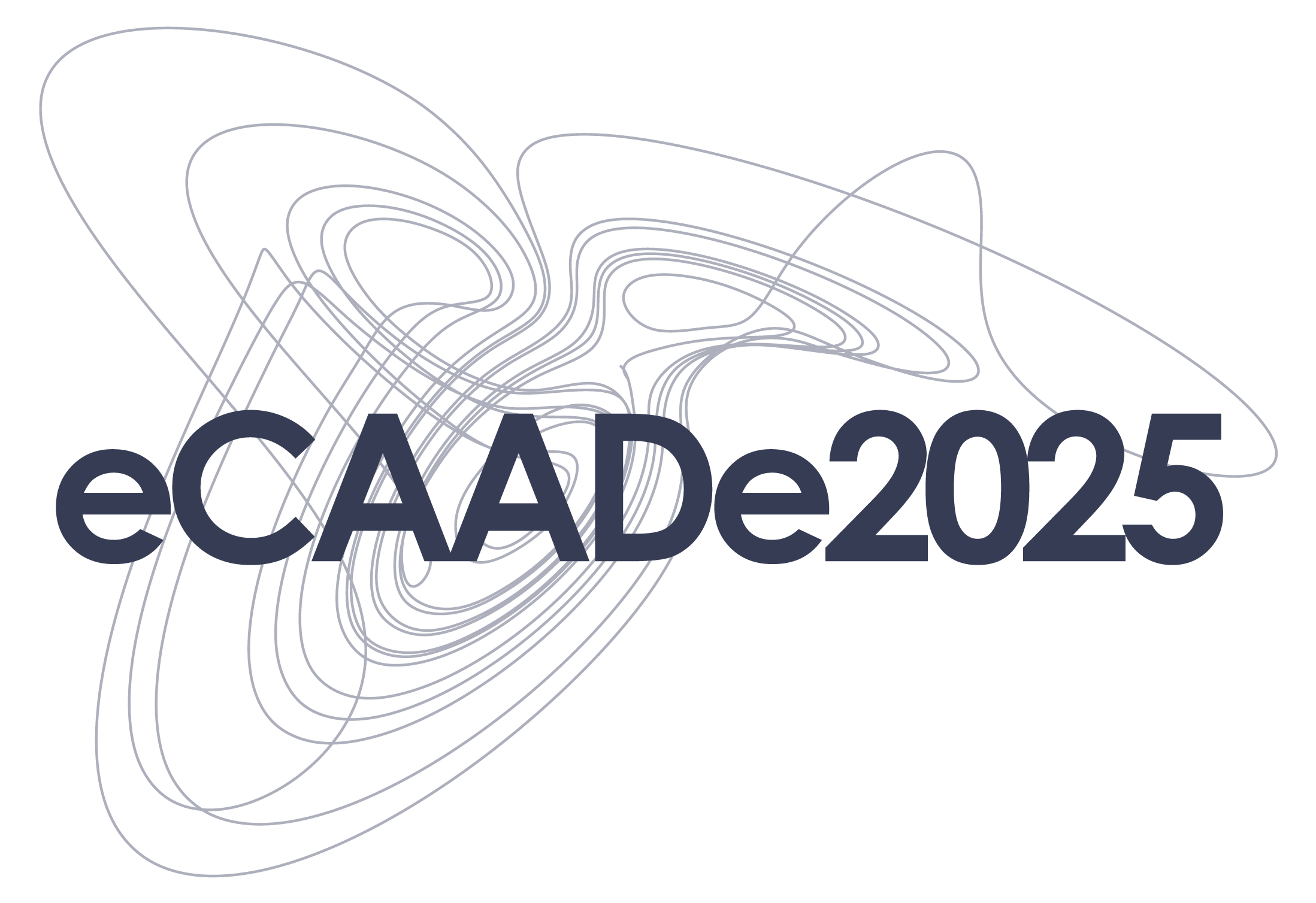Theme: Confluence
The eCAADe (Education and Research in Computer Aided Architectural Design in Europe) community stands on the verge of a confluence, a dynamic and interactive landscape where different flows of paradigms converge or diverge, shaping thoughts, practices and approaches in education and praxis. With the ever-changing quality of these subject matters, discussing and staying ahead of potential backwardness is necessary. This need shows itself best with terms such as digital, which are widely used. Still, with each new addition of figurations, just like how digital as a word mentioned before presents one with exciting new opportunities such as VR, AR, AI, BIM, and all soon-to-emerge possibilities, they become evermore vague and insufficient to embrace these figurations within their respective contexts completely. The dichotomies and binary state of things we are accustomed to are also metamorphosing, gaining more depth and numerous other sides. Opposing concepts, which include analogue/digital, virtual/real, natural/artificial, etc., prove almost non-compliant with supporting today’s concerns. Apart from the issue of terms and their timeliness, a refreshed outlook on this emerging landscape should be brought up better to evaluate the ongoing efforts of the eCAADe sphere.
Undoubtedly, designers and educators have come a long way since eCAADe launched first in the late 80s. Since then, computers have become essential to anybody’s daily life, used even for the most mundane tasks. Evidently, anyone can imagine or internalize the apparent necessity for new baselines for computer-aided endeavors, design, and education non-excluded. A new mindset and lifestyle are disseminated, and personal computers are indeed becoming personal assets; hence, these topics should not be revisited but tackled with a completely fresh perspective.
Where does the imagery of confluence fit within this context? The confluence as a formation can very well represent the convergent and divergent dynamics of numerous paradigms we are subjected to and experience on a daily basis when conducting design and education activities. It is not easy to deny the overflow of data and rapid advancements in technology, shaping central and peripheral ideas or activities, just like how confluences may influence their surroundings. Another quality of confluence that represents today’s state is the way they converge as well as diverge while flowing through other formations. Convergence is often something hoped for, but these hopes can overshadow the significance of divergence, especially for topics concerned by the eCAADe sphere.
However, diffractions such as these require a form of deliberate and considered steering. By doing so, currently existent asymmetries and scale differences between different parts or aspects within the fields in question can be unveiled. While the practices in design and architecture change rapidly and are abreast of technological developments, it is evident that constantly updating institutional education to conform to these changes can be more challenging.
The issue of resiliency and dependence on technology presents another contrast. Apart from education and praxis, making, in general, gained momentum with the increase in the number of resources or tools accessible and readily available to individuals inclined to acquire these skills on their own, often without a formal education. Alongside the existence of such a population, a decrease in challenges and inversely proportional mundane tasks involved in “creative” processes.
In the grand narrative of eCAADe’s evolution, the concept of confluence reflects the merging of ideas and their divergence, a duality that necessitates a balanced approach. By navigating these currents with mindful intentions, we can illuminate the disparities, seize the opportunities, and propel the eCAADe community towards a responsive and innovative future.
eCAADe 2025 welcomes all scholars and practitioners while providing an open and flexible platform for every conversation contemplating:
- New Landscape of Modeling and Computing
- Our Experiences and Experiments in an Ever-Changing Landscape of Design and Making
- Collaborating in a World with Non-Human Actors
- Exploring the New Landscape of Education
- Hopes and Opportunities of Abutting Fields with Potential Tensions
- Measuring, Modeling, Simulating, Predicting, Planning and Designing the Habitat
in the following tracks:
- Artificial Intelligence, Machine Learning and Deep Learning for Design and Built Environment
- Building Information Modelling,
- Parametric and Generative Design
- Collaborative and Participative Design
- Data Acquisition, Big Data and Digital Twins in Architecture
- Design Concepts, Strategies and Experimentation
- Design Tools Development and Application
- Digital Design and Construction for Sustainable Built Environment
Education in Computational Design and Digital Fabrication - Human-Computer Interaction in Design
- Information Technology and Digital Heritage
- Internet of Things for Built Environment
- Numerical Control and Robotic Fabrication
- Shape, Form, Geometry and Material Studies
- Smart and Responsive Design and Optimization of Structures
- Smart Cities, Simulation, Prediction and Evaluation
- Theory and Practice in Computational Design and Digital Fabrication
- Virtual Reality, Augmented Reality and Mixed Reality in Architecture
Online Tracks:
There will be a limited number of virtual presentations possible at eCAADe 2025 in Ankara to enable those who are unable to travel to Türkiye to participate in the conference.

